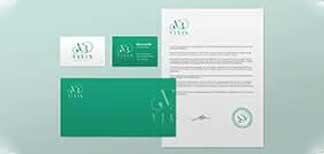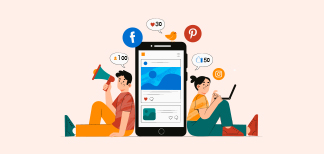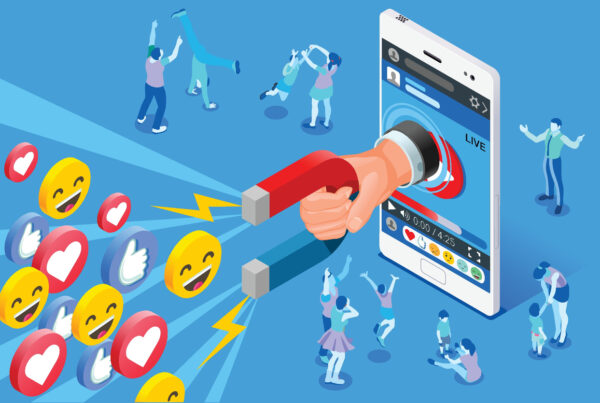
Introduction;
A different approach to getting a modern logo design is to participate in one of the many online competitions or crowdsourcing platforms that are mushrooming all over the internet. But are these actually a good idea? Can businesses truly find a contemporary brand logo of equivalent quality for a much lower cost? Crowdsourcing refers to the technique of enlisting a group of individuals for a common objective, be it problem-solving, innovation, or efficiency. It has become simpler for people to share ideas and knowledge for a project or cause as a result of increased connectedness. Crowdsourcing, in a nutshell, is the term for this type of group action.
The Various Kinds;
Crowdfunding;
Crowdfunding entails requesting financial contributions from others for your cause. Crowdfunding, for instance, can assist you in raising the $20,000 you need for a studio album. Your goal must be fully funded before the deadline if it is fewer than 60 days away, or all donations will need to be refunded to the donors.
Crowdsourcing & Brand Logos: Potential Interchangeability;
Despite these minor distinctions, the terms “logo design contest” and “crowd sourcing” are sometimes used interchangeably. While crowdsourcing typically refers to logo contests in the field of logo creation, the phrase is also used to describe reputable business endeavors.
Crowdsourcing can be a worthwhile endeavor, particularly if you use it to gather information or connect with your target audience. In this situation, you are asking a collection of clients to act as creators in exchange for pre-agreed cash. They are just requested to provide a perspective from the outside world, not to undertake highly specialized tasks.
Micro Tasking;
As the name implies, micro tasking is dividing work into little tasks and assigning them to a large group of employees. As a result, if your website, for example, needs descriptions for 1000 photographs, you can ask 1000 users to provide one caption per picture.
With micro tasking, you may anticipate seeing results quickly and frequently with fewer mistakes. Micro tasking also includes activities like picture scanning, database maintenance, proofreading, and voice transcription.
Voting, Fundraising, Innovation & Enlightenment;
You can just tell your designers what you want, how much you’re ready to pay, and your deadline if you’re looking for a specific logo design. For your brand specifically, all interested workers will provide a ready-to-use design. You can use crowdsourcing to get designs for fashion publications, commercials, and videos. Crowdsourcing can be used for just about anything that can be designed.
Some Perks of This Format Are Listed Below;
Collaborating With an Artistic Community;
Web and logo designers who don’t appreciate the value of uniqueness frequently submit plagiarized work in design competitions. Numerous design businesses base their projects on what they think is best for their clientele, and while they’re at it, the less experienced design firms bend their preferences to appease their clients and, as a result, get their business. On the other side, with crowdfunding, the designers occasionally know very little about the company and have no mandatory obligation to the client.
As a result, this encourages a creative workplace where numerous unique, though innovative viewpoints are expressed by various designer. For instance, The Lego Company has a special website created for fans to submit their own product ideas. Then, other users can vote for the concepts they like the most, expressing why they like them so much and how much they would pay for them.
A suggestion that receives more than 10,000 votes is sent to the official Lego review board, where the team members determine whether or not to include it in future products. The Jaws boat and shark, a red squirrel, and a duplicate of Batman’s Wayne Manor are among the works that have only recently been questioned.
Shrinking the Size of Overhead Expenses;
Some companies opt to employ graphic designers to constantly monitor and oversee the company’s creative output. Payroll, taxes, employee benefits, salaries, and other expenses can make this rather expensive. Additionally, during downtime, internal designers cannot be fully leveraged. Therefore, crowdsourcing offers a variety of services, such as banner ads, unique graphics, email campaigns, and pay-as-you-go pricing schemes.
The Entities Crowdsourcing Aids: Beneficiaries;
Creating a logo can be expensive, just like any other specialized service. Due to start-up costs, many small to large business owners look for every opportunity to save money. Why not choose that option if you can have a decent company logo for less money?
Crowdsourcing can occasionally produce a result that is superior to that of conventional design firms. It’s incredible to observe how many bright individuals can generate a greater variety of ideas than a single designer, regardless of experience level or training.
For business personnel, crowdsourcing upfront work takes less time because there are no in-person meetings with designers or providing real-time feedback on a project that is always changing until it is completed flawlessly.
But in competitions for logo design and crowdsourcing, there is only one apparent victor: the organizations in charge of the websites that provide these services. Crowdsourcing’s acceptance is precisely what the design industry needs to lose the pompous reputation Forbes has given it. Without further ado, the following is a list of reasons you might think about crowdsourcing for your upcoming logo design assignment.
This Is Collaborative & Social;
The 99Designs development team features a built-in polling system. This entails that you can choose a variety of designs—specifically, eight—and solicit feedback from your coworkers, friends, and family. They may easily give each design a rating and add a comment.
For instance, Hyatt garnered 2,876 votes for one of his designs for a book cover. The criticisms helped him further refine his designs and make important adjustments to the subtitle, among other things. One of the closest things you can do to focus group testing before a launch is probably this.
Intellectual Property/ Copyright Issues & Piracy;
Many people lack basic knowledge of graphic design, which makes it easier for Photoshop swindlers and fake contest site accounts to take unfair advantage. Many businesses are unaware that they are receiving a subpar product. Never would they consider that their brand, a service or item that is primarily represented by their logo, is to blame when commerce starts to stall. Additionally, they might occasionally run into copyright infringement problems.
A logo contest entry that heavily mimics other comparable logo designs is displayed above. And this is only one of many examples of “stolen logos” that number in the hundreds or even thousands. Despite the fact that it seems like logo design competitions are put up to generate these circumstances
This is only one of many examples of “stolen logos” that number in the hundreds or even thousands. Despite the fact that the issue of intellectual theft and plagiarism is frequently mentioned in the graphic design community, it seems as though logo design competitions are designed to produce these circumstances.
Inexpensiveness;
In his more than thirty years of book publishing, Michael Hyatt was involved in the creation of numerous book covers. “I was constantly shocked by the amount we had to pay for design.” Spending $5,000 (or more) on a book jacket was common, according to him.
This is partly due to the difficulty in locating and hiring excellent designers for independent projects. Hyatt claimed that because the more seasoned ones had little competition, they could charge hefty rates. But crowdsourcing altered everything
Costs rapidly decreased thanks to the influence of social networking, online competitions, and the free market. Given that nobody is compelled to use it, it is a voluntary system. However, for around $400, you can acquire a respectable book cover design.
Astroturfing or Creating a Whiz;
To double down is a fantastic way to use crowdsourcing. You can simply solicit support from followers and your network to vote on designs because certain platforms allow users to conduct surveys and voting through social media accounts. This not only successfully offers helpful comments, but it also contributes to building a significant buzz as work progresses.
When work dynamics at Wild Creations (WC) underwent a substantial upheaval a few years ago, the team decided to use the chance to revitalize their six-year-old brand. They believed they had enough creativity and experience among the management and partners to develop a new identity for the brand. They knew exactly how they intended to change the perception of their business.
The only issue was that they fell prey to the IKEA effect—or, to put it another way, the prejudice brought about by your own labor of love. Years previously, the business had created the logo, which always included a pair of eyes. They intended to include these eyeballs in the new design when they decided to rebrand. Over 300 different designs were submitted for their project on 99designs.com, and in the end, WC selected one even though it did not adhere to their specified standards despite how strongly the designer’s suggestions stood out.
Some Points to Be Vary About;
The Down Side of Crowdsource Host;
Much like a coin, crowdsourcing has both positive and negative aspects. For instance, a freelance graphic designer or a logo design competition might assist your team win first place, but are the participant benefits sufficient for designers who fall short of the deadline? What specific benefits does it provide the organization carrying out the task?
Many business owners of startups think logo design competitions are a complete waste of time. In one instance, the winner of a contest for a logo design would receive a $350 prize. Nearly 54 entries later, nothing was successful. The customer could have easily worked with an agency, a professional logo creator, and obtained a design that they actually required for the amount of money and time lost.
Why trust a crucial process to a third party with no financial stake in the company, especially if you think the appropriate logo will boost your brand’s popularity and success? Unlike contestants for logos, anyone can quickly pick an image to slap on the letterhead in Microsoft clipart.
You Might or Might Not Obtain the Best or Maximum Performance;
In terms of crowdsourcing, the adage “you get what you pay for” is undoubtedly true. When working with seasoned logo designers, you can be sure that these qualified experts will prioritize your design over all others. With crowdsourcing, though, your design won’t be finalized until they have the time. Mainly 15% of crowd workers utilize this technique as their main source of income, and more than two-thirds said they only do it as a hobby or to make “a little more money on the side.” Surely, the value of your company logo exceeds that. Additionally, there is always a possibility that you will be provided used work. Logo designers who eventually miss out on previous projects
Likewise, there is always a possibility that you will be provided used work. Losing out on previous projects after putting time and effort into the proposal may make logo designers reluctant to let it go. What do you suppose they do then? The majority of them save their previous work and present it as “new” concepts for the logo design of the following business, which could be your business. Once more, all brands require and deserve more than just haphazard leftovers from earlier design initiatives.
Conclusive Remarks;
Enough said, are design competitions and crowdsourcing efficient methods for completing logo design work? Maybe. Working with freelancers or a design agency is not comparable in terms of the quantity of concepts you will be pitched. When it comes to production quality and dependability, they simply cannot compete.
There is no practical cap on the amount of amended or original ideas you will receive because crowdsourcing platforms officially do not pay their employees. Are all of these sound ideas? In no way. Most of the concepts you encounter have a higher likelihood of being stolen from somewhere else. However, in the actual world, there are rarely any pearls among the oysters that crowdsourcing produces.














Recent Comments